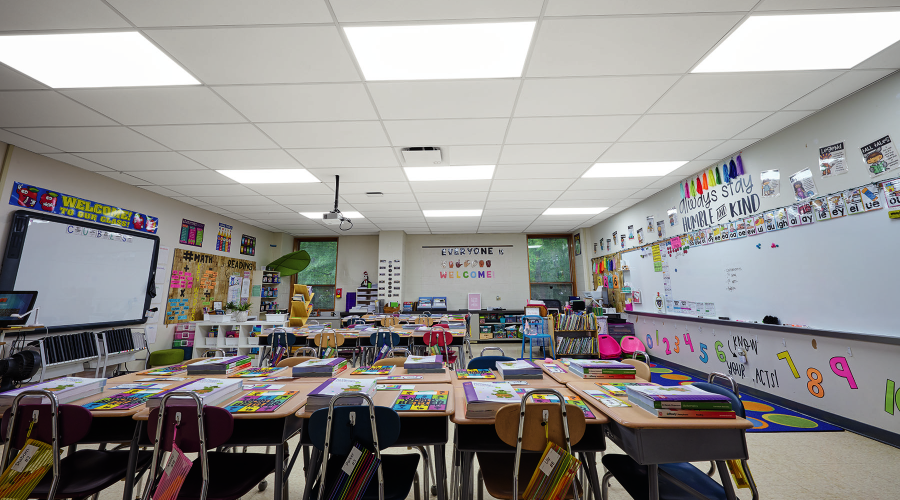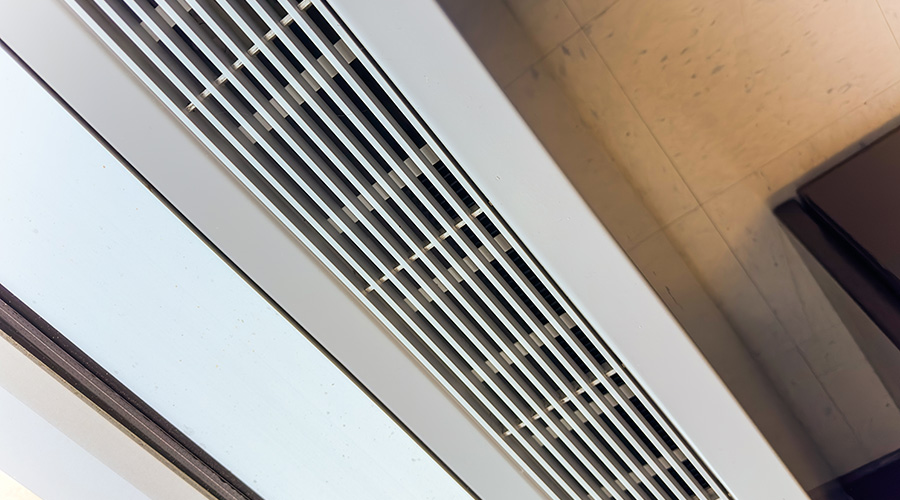 Poor indoor air quality in facilities such as schools can lead to immediate and long-term effects that include headaches, dizziness,respiratory diseases and cancer.
Poor indoor air quality in facilities such as schools can lead to immediate and long-term effects that include headaches, dizziness,respiratory diseases and cancer.IAQ: Filtering Out Contaminants
Managers looking to improve IAQ and reduce airborne contaminants, need to have a better understanding of the building's air filtration system.
Filtration and cleaning
Managers looking to improve IAQ and reduce airborne contaminants also should review their departments’ air filtration program. One key goal is to ensure the filtration system is not compromised by microbial growth due to condensation, fog or water infiltration. ASHRAE 189 requires a minimum MERV 8 rating for all filtration systems, as well as a minimum of a MERV 13 particle filter or air cleaner rating for facilities within the non-attainment zone for particulate matter 2.5.
For facilities in a non-attainment zone for ozone, an air cleaner to reduce ozone to levels specified in ASHRAE 62 is required. Manufacturer-provided filter changes are recommended, but they might not be appropriate for a facility given the load of the building. Monitoring in between filter changes is important to ensure technicians do not overlook a failed, collapsed or overloaded filter.
Installing differential pressure alarms across filter banks also can help managers determine the most appropriate filter change regimen, and it can provide a warning of loaded filters impacting system performance. Even one point of failure in a large filter bank can be disastrous to an IAQ program. In addition to filter changes, managers should include a review of filter hardware, fasteners, frames and seals to ensure the effectiveness of the filtration program.
One caveat: Air filter ratings are conducted under ideal laboratory conditions with no leakage and with proper loading of the filtration in the airstream. Compare this to the conditions in an existing facility.
As the focus on IAQ increases and managers look to provide energy efficiency and healthy buildings to occupants, the technology will follow. Managers looking for a major overhaul should consider researching emerging technologies, such as a natural ventilation solution that uses the natural stack effects and outside wind and airflow dynamic analysis of a building to provide increased indoor ventilation. Additional strategies during major renovations can include installing carbon filtration and ultraviolet-light filtration to minimize contaminants.
Dan Forino, P.E., CCP, LEED AP BD+C, WELL AP, is regional director with Horizon Engineering Associates in New York City. Forino has 11 years of experience in building commissioning and oversees the firm’s health care team, focusing on the regional health care institutions and overseeing their sustainability and indoor air quality consulting divisions. He has been a member of the Building Commissioning Association since 2010 and on the international board of directors for the BCA since 2015.
HEA on LinkedIn:www.linkedin.com/company/horizon-engineering-associates-llp. On Twitter: @HEA_Energy. On Facebook: www.facebook.com/HorizonEngineeringAssoc.
Related Topics:














